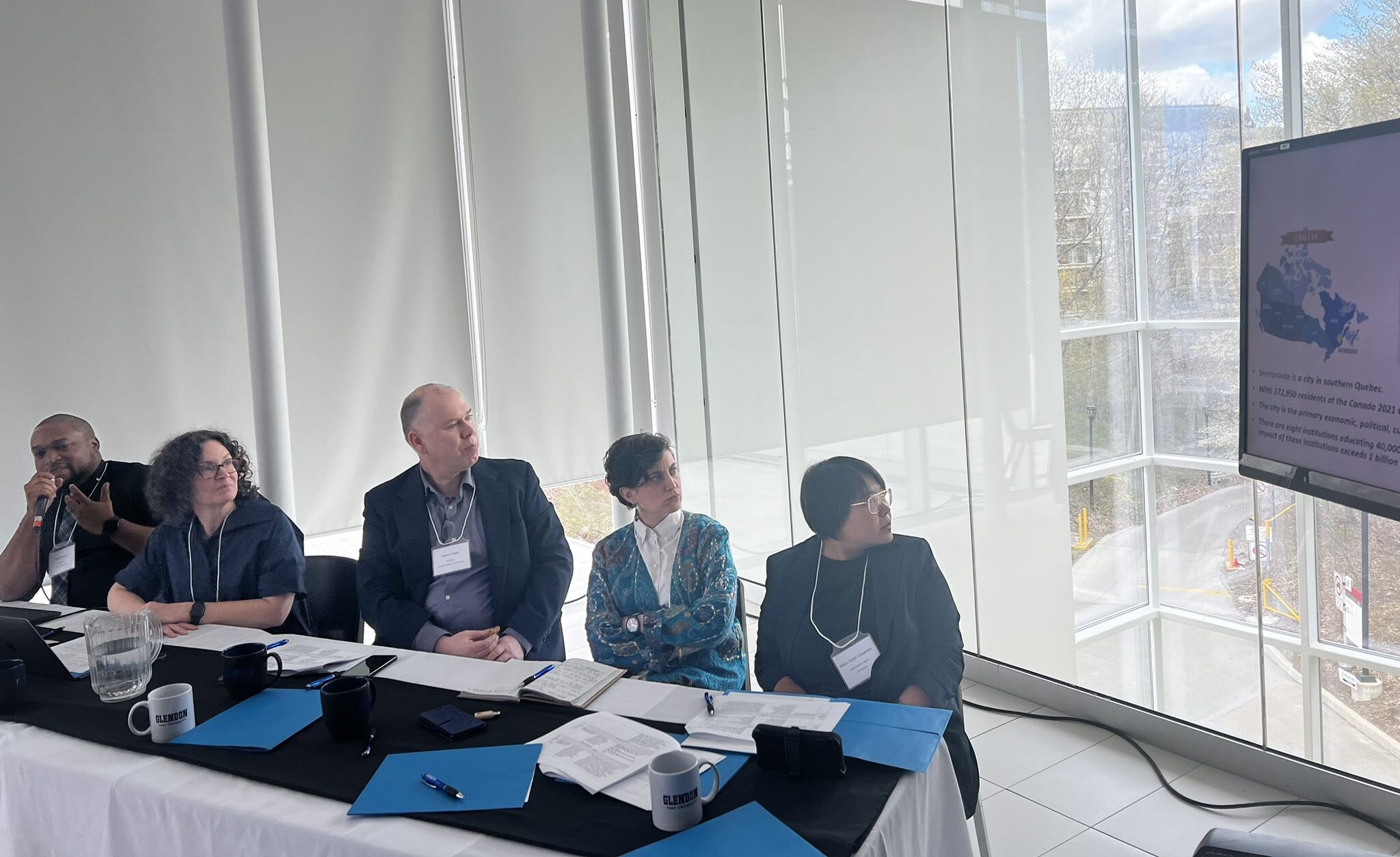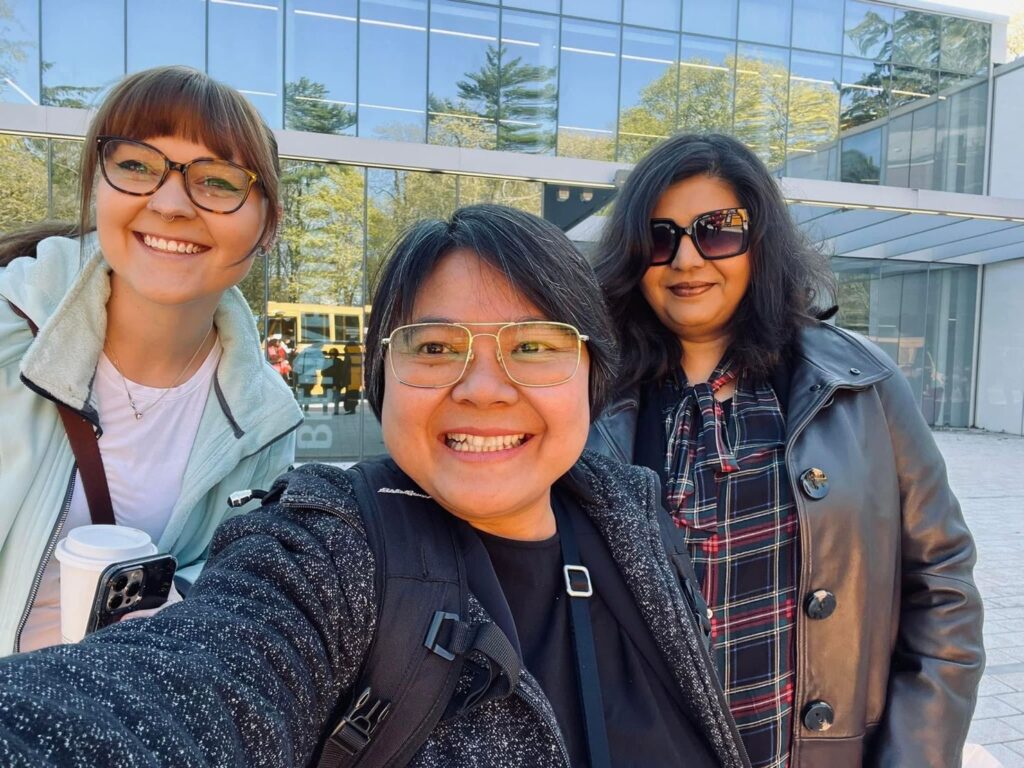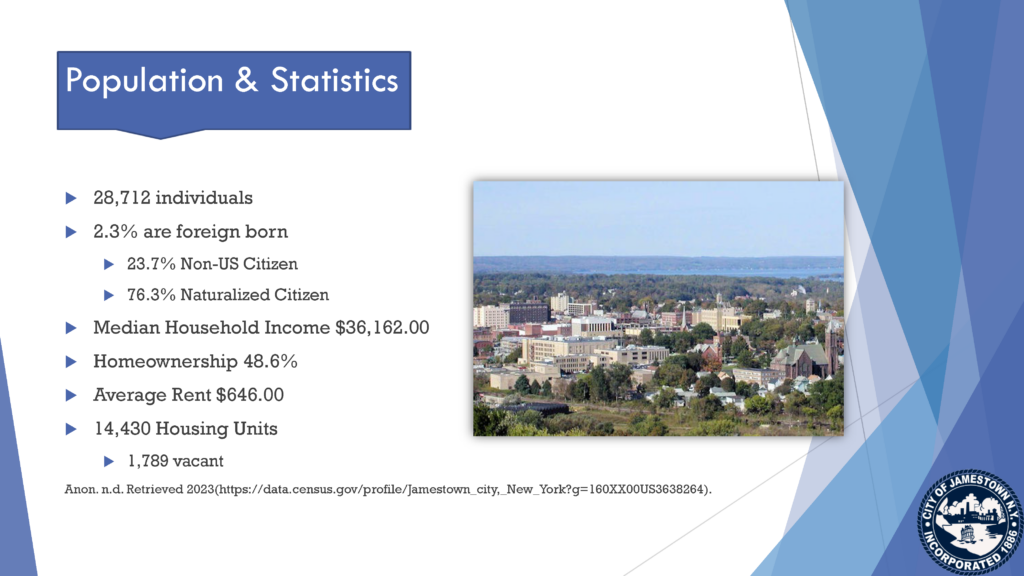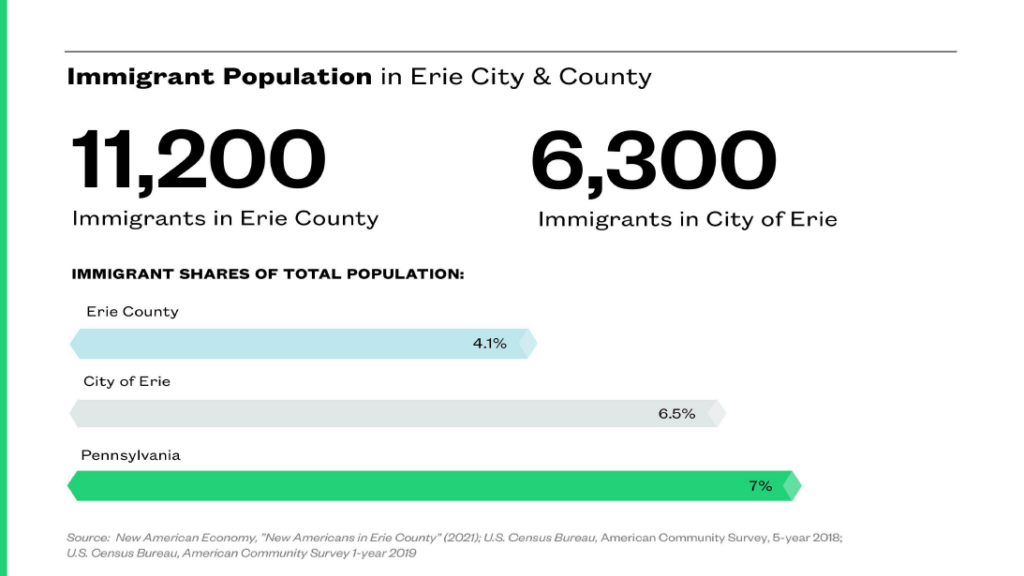
The policymaker, civil society organization, and city network panel at Whole-COMM’s Transatlantic CommunityPolicy-LAB. Photo credit: Whole-COMM
Around the world, governments of all sizes have a role in setting policies, building relationships, and implementing support systems for migrants. These ideas were explored at Whole-COMM’s Transatlantic CommunityPolicy-LAB held at York University in Toronto, Canada this past April.
Policymakers, researchers, NGO representatives, and city network representatives from North America and Europe (including Canada, Sweden, Italy, Netherlands, the United States, and more) attended to share and discuss best practices for migrant inclusion.
With participants from both sides of the Atlantic Ocean coming together, Whole-COMM’s event aimed to enhance knowledge exchange and expand the conversation about welcoming policymaking and practices in small and medium-sized towns and rural areas.
Two participants from small communities in the United States — Kasie Foulk from Jamestown, New York and Niken Astari Carpenter from Erie, Pennsylvania — reflected on the common threads they heard from welcoming practitioners worldwide and the takeaways they hope to bring back to their communities.
Sharing local solutions to national and global challenges
Among the various learning opportunities at the event, Kasie and Niken gave presentations about general migration and welcoming trends in their communities in the northeast United States.

From left to right: Kasie Foulk, Niken Astari Carpenter, and Sharmin Khundker (New American Council Member from the City of Erie)
According to them, local welcoming efforts in the U.S. are often the strongest support systems migrants and refugees can access when they arrive. With a fractured national immigration system and reduction of federal refugee resettlement support over the last decade, local communities in the U.S. are leading welcoming and inclusion work. The City of Erie and the City of Jamestown are among hundreds of local governments that are members of the U.S.-based Welcoming Network, which supports communities’ efforts to create inclusive policies and programs for newcomers.
In Kasie’s role as the deputy director of housing policy and development at the City of Jamestown, New York, her local government is working to find ways to respond to the challenges newcomers face.
The lower cost of living is one advantage that rural places and smaller towns and cities have compared to their larger, urban counterparts. Still, the quality of housing remains a challenge. Kasie says, “We have a lot of housing and it’s affordable, but it’s not all quality housing. It’s hard to be welcoming in the sense that we can provide you a safe place to live when we don’t have those safe places to live.”

According to the U.S. Census, less than 30,000 people live in Jamestown, New York. Kasie shared that the community has a lot of affordable housing available, with over 1,700 units vacant.
The fragmented immigrant and asylum system in the U.S. was a surprise to attendees from Canada and Europe. “When I said that our asylum seekers couldn’t receive [government] assistance and couldn’t work for a year, people [from other countries] were floored,” says Kasie. “There were some things I learned that could be utilized, [but many of the policy interventions don’t translate] because our federal governments are so different.”
However, both Kasie and Niken heard a variety of similar challenges to what they were facing in their communities, including language access, housing, and employment. A common solution that people shared was using data and stories to inform and enhance policy decisions at all levels of government.
Connecting research to policy and practice
During Niken’s presentation, she shared data from a report about Erie’s refugee and immigrant populations.
“There’s a need to connect studies and research data on immigration to policymakers and all levels of governments because as important as those studies and research data are, if there’s no buy-in or understanding about the importance of welcoming work, those studies and research data are going to waste as they won’t be utilized or implemented,” reflects Niken, the former New American liaison at the City of Erie, Pennsylvania.

A slide from Niken’s presentation at the event shares data about the immigrant population in Erie, Pennsylvania. With a total population of around 95,000 people in the City of Erie, about 6.5% of people living in the city are immigrants (as of 2019).
The City of Erie is Certified Welcoming, a formal designation by Welcoming America for local governments that have created policies and programs reflecting their values and commitment to immigrant inclusion. The Certified Welcoming program is a noteworthy example of how research and policy can be connected to build stronger, more cohesive communities.
To become Certified Welcoming, the City of Erie completed an intensive audit, in which local policies and programs were assessed against the Welcoming Standard to evaluate commitment and investments in welcoming and immigrant inclusion in the areas of education, civic engagement, economic development, community safety, and more.
Following the evaluation, the local government guided the next steps in their welcoming work by using the strengths and areas of improvement identified in the certification report to create an action plan. Fulfilling this action plan was required for Erie to achieve the designation as a Certified Welcoming city.
Beyond the policy gains that can come from a holistic evaluation of the community, a process like Certified Welcoming also helps identify partnerships and build accountability into the local government’s welcoming work. Niken says, “The Certified Welcoming effort has helped to create new alliances and channels of communication between various communities in our city.”
Encouraging signs of global welcoming
More than anything, Whole-COMM’s Transatlantic CommunityPolicy-LAB was an opportunity for people to build relationships with others doing similar migrant inclusion work across the world. Whether it was through formal presentations or conversations over dinner, the U.S. attendees reflected that the event reaffirmed the value of partnerships and trust-building.
“I want to emphasize the importance of trust and relationships which are really the main keys to welcoming work,” says Niken. To her, policy change is not and can not be the sole solution to community division and anti-immigration attitudes.
“We can’t make a real policy change if we don’t have the support,” Kasie says. “Trying to build the community first before getting anywhere with policy changes is very important.” Creating trusting, long-term connections are at the core of sustainable welcoming work.
With policymakers and practitioners from around the world in all stages of their welcoming journeys, the event was an encouraging look at what has worked well and lessons that can be applied globally. One presenter shared that sports have been a tool to make newcomers feel more welcome in their community.
“It bridged a gap between people that live there now and new people that come in because they both can enjoy a mutual activity,” Kasie reflects. She sees similar opportunities to build bridges between newcomers and long-time residents in Jamestown through food. For example, a Colombian family offers Colombian cuisine after church and Kasie shares that the food they make creates an experience that everyone in the community can enjoy.
Kasie says that it was inspiring to see the many pathways that other communities have taken to building welcoming infrastructure: “Getting validation from other areas that have been doing this for a long time with a more robust [federal immigration] system, it just felt very good to know that we’re heading in the right direction.”
The Whole-COMM project proposes an innovative whole-of-community approach to the analysis of the integration of post-2014 migrants in small and medium-sized towns and rural areas.
Welcoming International is represented on Whole-COMM’s external advisory board and advises the project scope, research questions, and outputs from the perspective of policy practitioners.
To learn more about these initiatives, explore:
